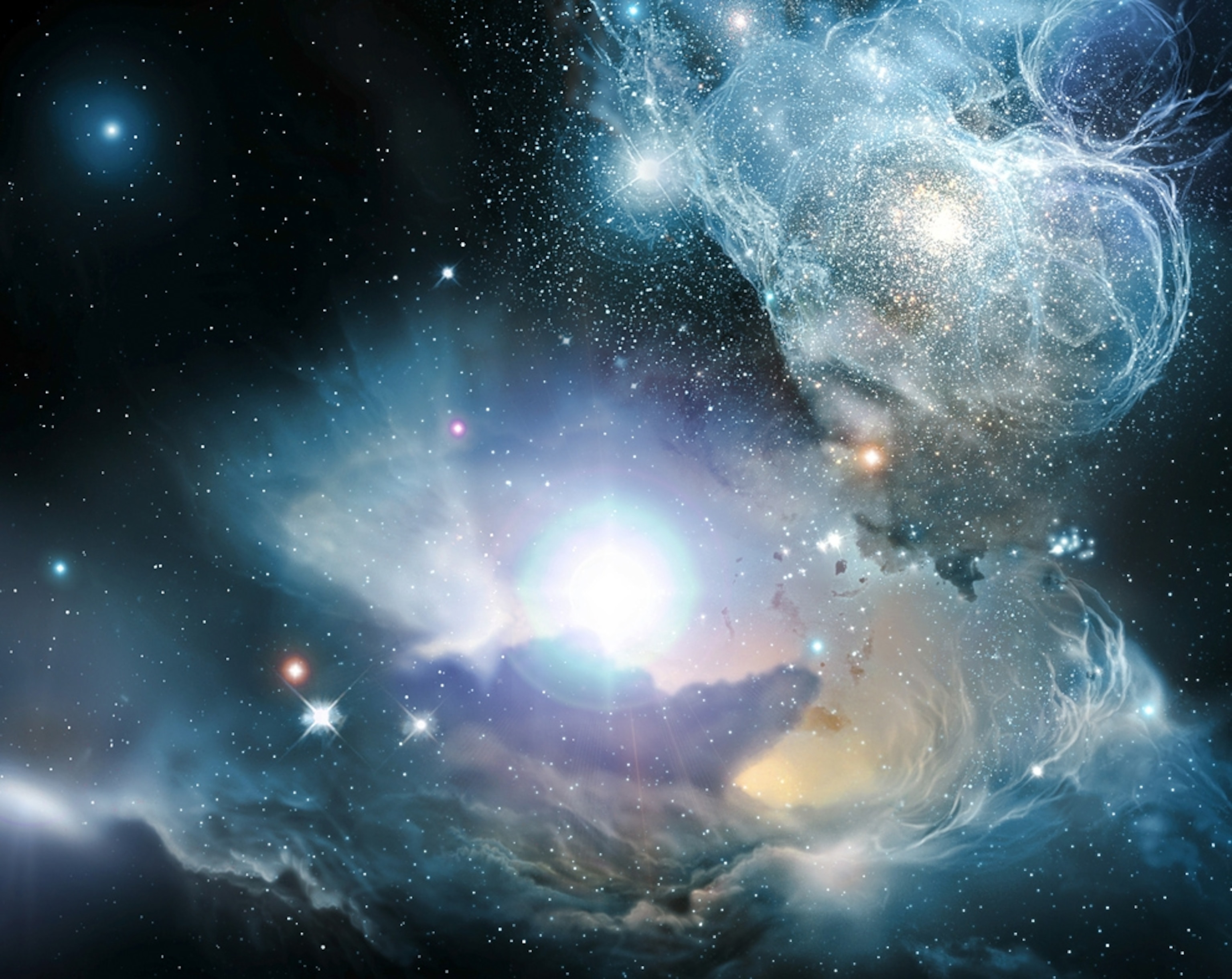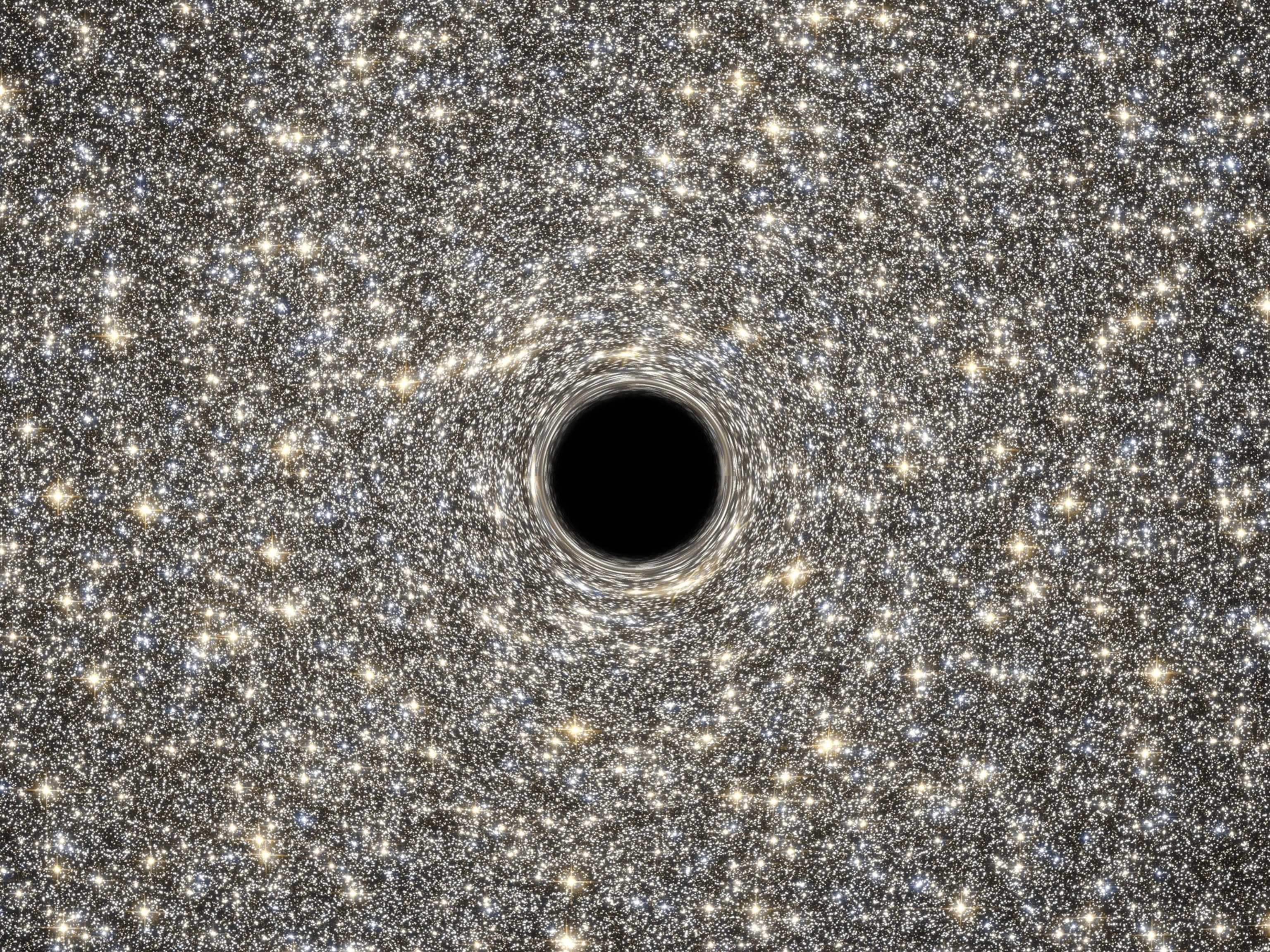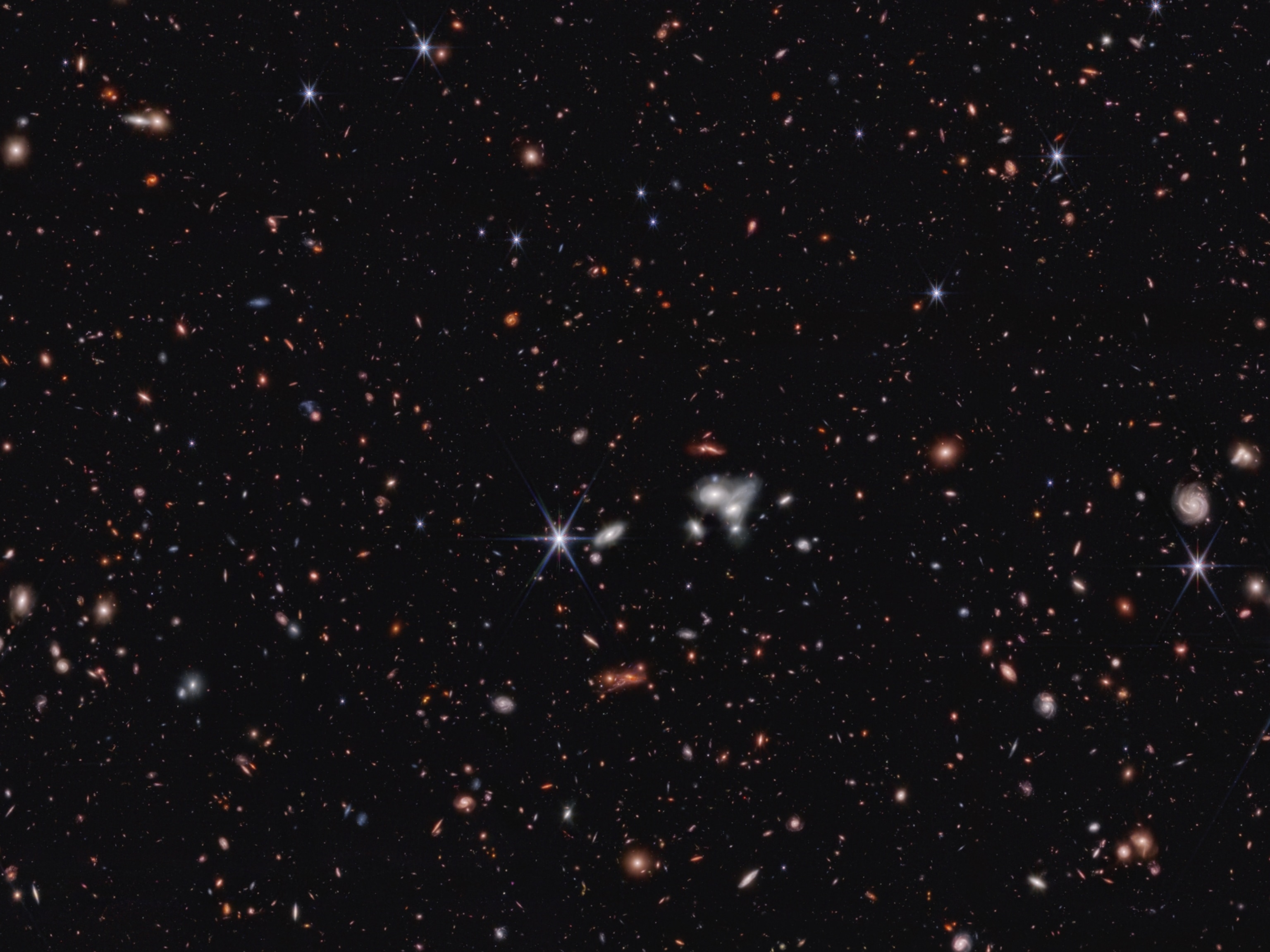
Black Hole Blasts Superheated Early Universe
Monster galaxies' heat stunted smaller ones 11 billion years ago.
Monster galaxies with supermassive black hole hearts released fierce blasts that superheated the early universe, new Hubble observations suggest. The scorching conditions also stunted the growth of smaller dwarf galaxies, the new research shows.
Between 11.7 to 11.3 billion years ago, ultraviolet (UV) light emitted by quasars—enormous galaxies with supermassive black holes at their centers—stripped electrons of cosmic helium, according to observations made with the Cosmic Origins Spectrograph (COS) on NASA's Hubble Space Telescope. The big bang that created our universe occurred around 13.7 billion years ago.
The electron-stripping process, known as ionization, heated the helium gas from 18,000 to nearly 40,000 degrees Fahrenheit (10,000 to 22,000 degrees Celsius).
(Related: "Immaculate Black Holes Found Near Universe's Conception.")
Warm gas moves faster than cool gas, and the heated helium sped free of the gravitational clutches of so-called dwarf galaxies. Helium, the second most abundant element in the universe after hydrogen, is one of the main ingredients of star formation.
"During this time, dwarf galaxies didn't get fed very well," said study leader Michael Shull of the University of Colorado at Boulder.
Cool Quasars Bulked Up Dwarfs
With Hubble's help, Shull and his team detected a specific wavelength of UV light emitted from distant quasars about 11 billion years ago.
Light emitted from farther away, and thus older, quasars lacked this wavelength, because the light was getting absorbed by neutral helium as well as helium with a single ion—or charged particle. Single-ion helium occurs when one electron is lost.
The helium gas became transparent to the UV light only when the helium became double ionized. By determining when this transition took place, scientists can pin down the start date of the helium-ionization era.
After about 500 million years, the ionized helium in the quasars cooled and slowed enough that dwarf galaxies could begin bulking up again. (See black hole pictures.)
"A lot of them held on to their cores, and they had to wait until this period was done before they could start bringing in gas again," Shull said.
Gas Blasts Occurred on Earth
A similar phenomenon happens to the planets of our solar system, Shull added.
Giant gas planets such as Jupiter and Saturn have enough mass to hang on to hydrogen and helium atoms heated by the sun, but lower-mass planets such as Earth have already lost all of their lighter elements.
For example, Earth's atmosphere contains only traces of helium and hydrogen, created by processes such as radioactive decay. But that gas escapes from Earth into space shortly after the gas's formation, Shull said.
The research will appear October 20 in The Astrophysical Journal.





